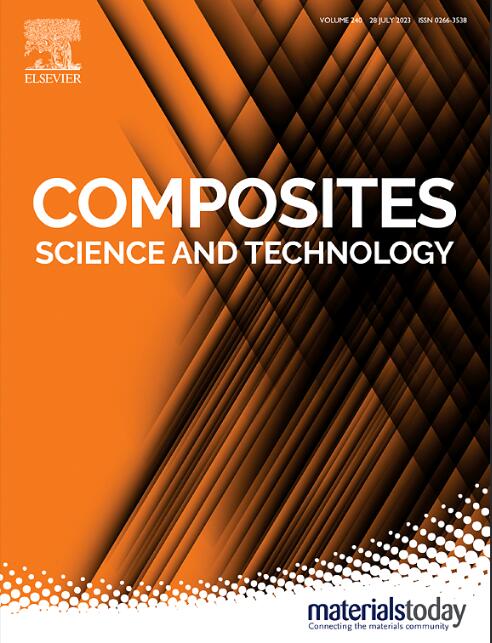Ni@graphite carbon synergistic reinforcement sites penetrated hierarchical porous carbon boosting PCMs encapsulation and solar-thermal energy storage
IF 8.3
1区 材料科学
Q1 MATERIALS SCIENCE, COMPOSITES
引用次数: 0
Abstract
Nano-carbon materials, owing to the sp2-hybridized carbon and highly porous structure, exhibit significant potential for incorporating phase change materials (PCMs) in solar energy storage and utilization. However, this potential is limited by their suboptimal photothermal responsiveness and the absence of hierarchical pore structures. Herein, we propose a dynamic regulation strategy to fabricate a Ni@graphite carbon-penetrated hierarchical carbon (Ni@C/C) structure for encapsulation of octadecanol (ODA) molecules. Ni@C active sites anchored within the hierarchical carbon framework rapidly capture photons. The coupling between Ni0 nanoparticles (NPs) and graphitized carbon enhances the electric field distribution around the Ni0 NPs, significantly improving photothermal performance. As a result, ODA/Ni@C/C demonstrated a remarkable photothermal conversion efficiency of 94.5 % under simulated one-sun irradiation. Notably, ODA/Ni@C/C exhibits a rapid response to ambient temperature changes, and sustains heat release over an extended period across a broad temperature range, demonstrating significant potential for applications in heat therapy masks and lithium-ion battery thermal management systems. This work provides both theoretical insights and practical guidance for the targeted design and preparation of advanced nano-carbon materials-based phase change composites.
Ni@graphite碳协同增强位点穿透分层多孔碳,促进pcm封装和太阳能热能储存
纳米碳材料由于其sp2杂化碳和高孔隙结构,在相变材料(PCMs)的太阳能存储和利用方面具有巨大的潜力。然而,这种潜力受到其次优光热响应性和缺乏分层孔结构的限制。在此,我们提出了一种动态调控策略来制备Ni@graphite碳渗透分层碳(Ni@C/C)结构,用于十八醇(ODA)分子的封装。Ni@C固定在分层碳框架内的活性位点迅速捕获光子。纳米Ni0与石墨化碳之间的耦合增强了纳米Ni0周围的电场分布,显著改善了纳米Ni0的光热性能。结果表明,ODA/Ni@C/C在模拟单太阳照射下的光热转换效率为94.5%。值得注意的是,ODA/Ni@C/C对环境温度变化表现出快速响应,并在较宽的温度范围内持续长时间释放热量,这在热疗面罩和锂离子电池热管理系统中显示出巨大的应用潜力。本研究为有针对性地设计和制备先进的纳米碳基相变复合材料提供了理论见解和实践指导。
本文章由计算机程序翻译,如有差异,请以英文原文为准。
求助全文
约1分钟内获得全文
求助全文
来源期刊

Composites Science and Technology
工程技术-材料科学:复合
CiteScore
16.20
自引率
9.90%
发文量
611
审稿时长
33 days
期刊介绍:
Composites Science and Technology publishes refereed original articles on the fundamental and applied science of engineering composites. The focus of this journal is on polymeric matrix composites with reinforcements/fillers ranging from nano- to macro-scale. CSTE encourages manuscripts reporting unique, innovative contributions to the physics, chemistry, materials science and applied mechanics aspects of advanced composites.
Besides traditional fiber reinforced composites, novel composites with significant potential for engineering applications are encouraged.
 求助内容:
求助内容: 应助结果提醒方式:
应助结果提醒方式:


